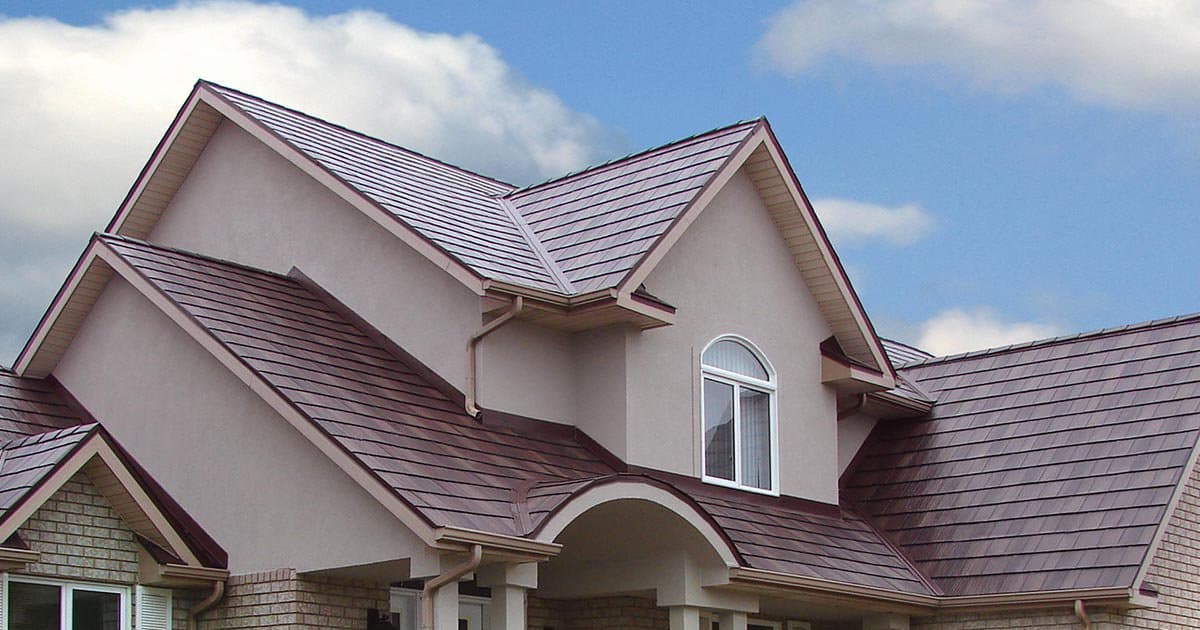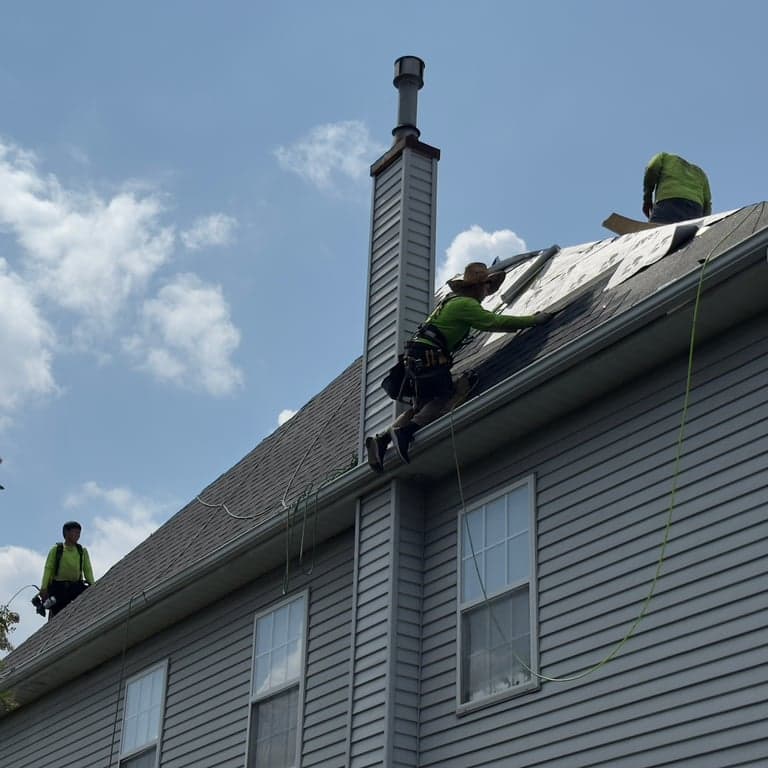Everything You Need to Know About Tile Roof Replacement
TL;DR: Concrete tile roofs last 30–50 years, clay up to 100+. Spot repairs are usually enough unless the underlayment is failing. Full replacements cost $7–$15 per square foot. Resetting tiles can save 40–60%. Always get an inspection before deciding.
Tile roofs—whether concrete, clay, or slate—offer beautiful curb appeal and exceptional durability. But over time, even the sturdiest tiles need attention. We’ve gathered the most common homeowner questions about tile-roof replacement and answered them all in one place.

1. How Much Does It Cost to Replace a Tile Roof?
The total cost to replace a tile roof depends on several factors: the type of tile, roof complexity (pitch, hips, valleys), regional labor rates, tear-off vs. overlay, and disposal fees.
Average National Range: $7–$15 per square foot installed.
Factors:
Tile Material: Concrete tile is usually cheaper ($7–$10/sqft) than premium clay ($10–$15+).
Roof Complexity: Steeper roofs and numerous hips/valleys can add $1–$3/sqft in labor.
Tear-Off: Fully removing old tiles and underlayment adds $1–$2/sqft.
2. How Much Does It Cost to Replace a Roof on a 1,500 sq. ft. House?
A 1,500 sq ft house typically has about 20–25 roofing “squares” (1 square = 100 sq ft).
Concrete Tile:
20 squares × $8/sqft = $16,000
25 squares × $8/sqft = $20,000
Clay Tile:
20 squares × $12/sqft = $24,000
25 squares × $12/sqft = $30,000
These are ballpark figures; always get multiple contractor bids for your specific home.
How Much Does a Tile Roof Cost Per Square Foot?
The average cost to install a tile roof ranges from $7 to $25 per square foot, depending on the material, labor, and roof complexity.
Tile Material | Cost per Sq Ft (Installed) | Notes |
|---|---|---|
Concrete Tile | $7–$12 | Most affordable tile option |
Clay Tile | $10–$18 | Classic look, heavier than concrete |
Slate Tile | $15–$30+ | High-end, longest lifespan |
Composite/Synthetic Tile | $10–$16 | Lightweight alternative to slate or clay |
These prices include tear-off, underlayment, installation, and disposal, but not structural reinforcement (which may be needed for heavy clay or slate).
Example: For a 2,000 sq. ft. roof using concrete tile at $9/sq ft, total installation = $18,000
3. What Is the Life Expectancy of a Tile Roof?
Tile roofs are renowned for their longevity:
Concrete Tile: 30–50 years with proper maintenance.
Clay Tile: 50–100 years (or more) in ideal climates.
Slate: Up to 100+ years.
Regular inspections—especially after severe weather—help ensure your roof reaches its maximum lifespan.
4. How Often Does a Tile Roof Need to Be Replaced?
Most tile roofs won’t need full replacement until at least 25–30 years, but minor repairs can extend their life. Factors that influence replacement timing include:
Climate & Weather Events: Freeze/thaw cycles, hail, and high winds can damage tiles.
Maintenance: Keeping underlayment sound and replacing broken tiles promptly prevents leaks.
5. How to Tell if Roof Tiles Need Replacing
Watch for these warning signs:
Cracked or Broken Tiles: Even a few can let water in.
Loose Tiles: Slipping tiles can expose underlayment.
Granule Loss: On concrete tiles, thinning surface granules indicate wear.
Staining or Moss/Algae Growth: Excess moisture can rot the deck beneath.
Interior Leaks or Stains: Obvious evidence of compromised tile or underlayment.
A seasonal inspection by a qualified roofer will catch issues early.
6. Can You Just Replace Roof Tiles?
Yes! One of the great advantages of tile roofing is that individual tiles can be swapped out without disturbing the rest of the roof. A qualified roofer can:
Remove the damaged tile(s)
Inspect and, if needed, replace the underlayment
Install new matching tiles
This spot repair approach is far more cost-effective than a full replacement—so long as the underlayment and flashings remain sound.
7. What’s Underneath a Roof Tile?
A typical tile-roof assembly (from top to bottom) includes:
Roof Tiles (clay/concrete/slate)
Underlayment (felt, synthetic, or self-adhering membrane)
Battens or Plywood Sheathing (depending on system)
Roof Deck (plywood or OSB)
Insulation & Ceiling
When replacing tiles, contractors evaluate the underlayment and deck for damage or rot.
8. How Long Does It Take to Fix a Roof Tile?
Single Tile Repair: 30–60 minutes (including minor underlayment tuck‐ins)
Partial Section Repair (dozens of tiles): 1–2 days, depending on access and drying times
Full Roof Replacement: 3–7 days on an average-sized home (depending on crew size and weather)
9. How Much Does It Cost to Reset a Tile Roof?
“Resetting” involves removing tiles, checking the underlayment, and reinstalling the same tiles. It can extend roof life without a full replacement.
Average Cost: $3–$6 per square foot, depending on labor rates and roof complexity.
Savings: Often 40–60% less than full re-tile, but only viable if tiles and deck are in good condition.
10. Does a New Tile Roof Increase Home Value?
Absolutely. A well-maintained tile roof can:
Boost curb appeal, drawing more buyers.
Signal durability, potentially lowering home-insurance premiums.
Add resale value—many appraisers credit 50–60% of roof replacement cost in market value.
11. What to Do If You Can’t Afford a New Roof
If a full replacement is out of reach, consider:
Spot Repairs: Replace only damaged tiles and underlayment sections.
Re‐Bedding/Raking: Reapply mortar in valleys and flashings.
Financing Options: Many roofing contractors offer payment plans or partner with lenders.
Home Equity Loans: Using your home’s equity can spread costs over many years.
Bottom Line
Tile roofs are an investment in beauty and longevity—but they require the right maintenance and, occasionally, targeted replacement work. By understanding the costs, signs of wear, and repair options, you’ll be able to keep your home protected and looking its best for decades to come.
Tile Roof Replacement Questions Homeowners Ask
Where can I buy replacement roof tiles?
You can find replacement tiles at roofing supply houses, local building material stores, or through your contractor. If you're trying to match an older tile, it's best to work with a roofer who has access to discontinued or hard-to-find inventory. Many manufacturers also sell through regional distributors, not big-box stores.
Where can I buy replacement concrete roof tiles?
Concrete tiles are typically sourced from brands like Eagle Roofing, Boral, or Westlake. While Home Depot and Lowe’s may carry limited stock, most homeowners will need to order from a specialty roofing supplier or through their contractor to ensure color and profile compatibility.
How do you replace a roof tile?
To replace a broken tile:
Carefully lift the surrounding tiles using a flat pry bar
Slide out the broken tile
Inspect the underlayment for damage
Slide the new tile into place and secure with adhesive or clips, depending on the system
Tip: It’s easy to crack neighboring tiles—this job is best left to a pro unless you're very comfortable on roofs.
How to replace tiles on roof without damaging others?
Use padding, wear soft-soled shoes, and never walk directly on the middle of a tile. Roofers use special walk boards and roof jacks to distribute weight evenly. If you must DIY, use foam pads to cushion foot pressure.
What is the best material for roof tiles?
It depends on your priorities:
Goal | Best Material |
|---|---|
Lowest cost | Concrete |
Longest lifespan | Slate |
Best fire resistance | Clay or Slate |
Lightest weight | Composite/Synthetic |
Classic style | Clay Barrel Tile |
Concrete is often the most practical balance of durability, price, and availability—especially in Pennsylvania and the Mid-Atlantic.
Related Posts

Which Roof Material Lasts the Longest?
Discover which roof materials—slate, clay tile, metal, cedar, or asphalt—deliver the longest lifespan (up to 150 years) and the best value for your home.
Get Your Free Estimate Today
Paragon Exterior is revolutionizing the roofing and siding industry. We prioritize quality, trust, and complete transparency — and we’re proud to declare it: the outdated, frustrating aspects of this field are being discarded. At Paragon, we enhance everything that truly matters: communication, craftsmanship, and care. Our mission is straightforward — to be the ideal partner for homeowners before, during, and long after the project is finished. This is how roofing and siding should be: comfortable, honest, and stress-free.

